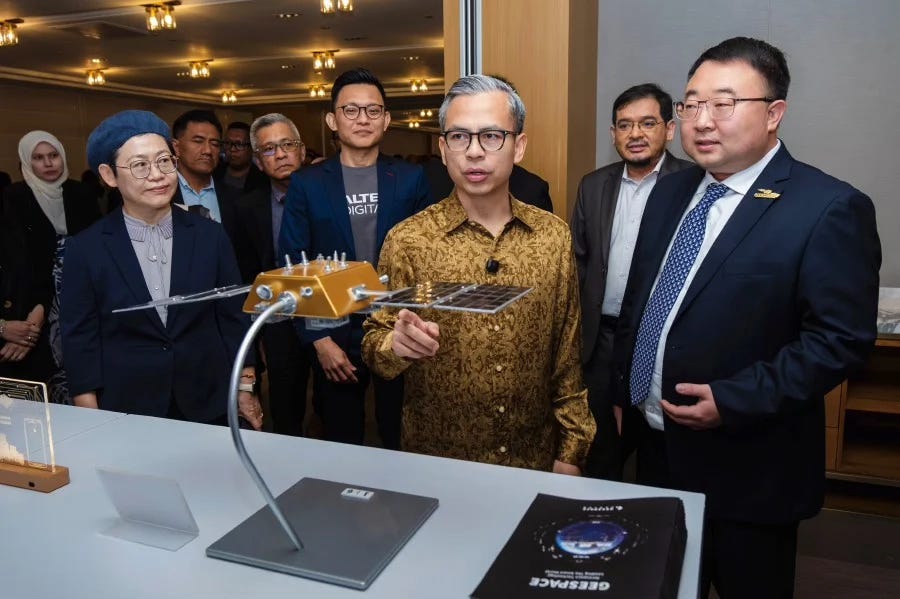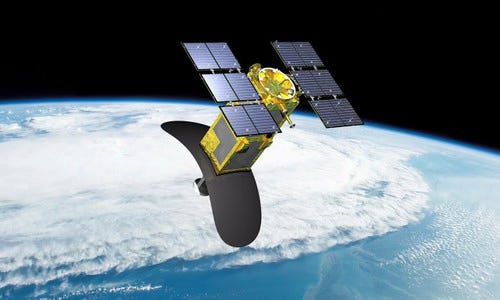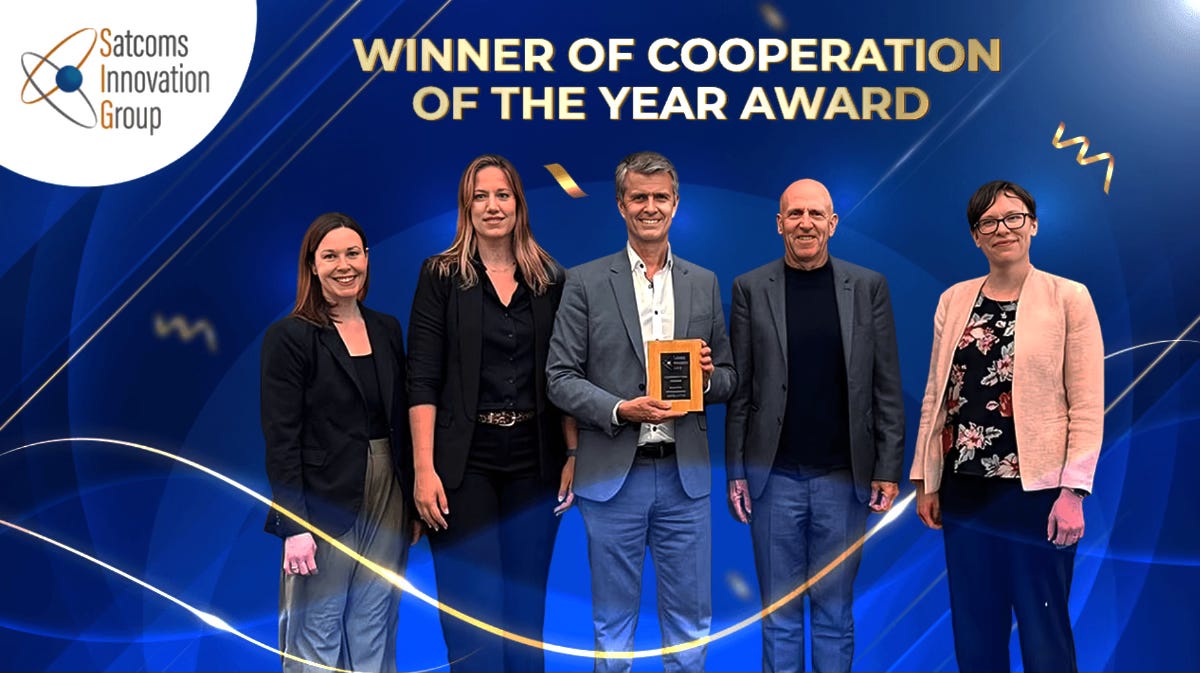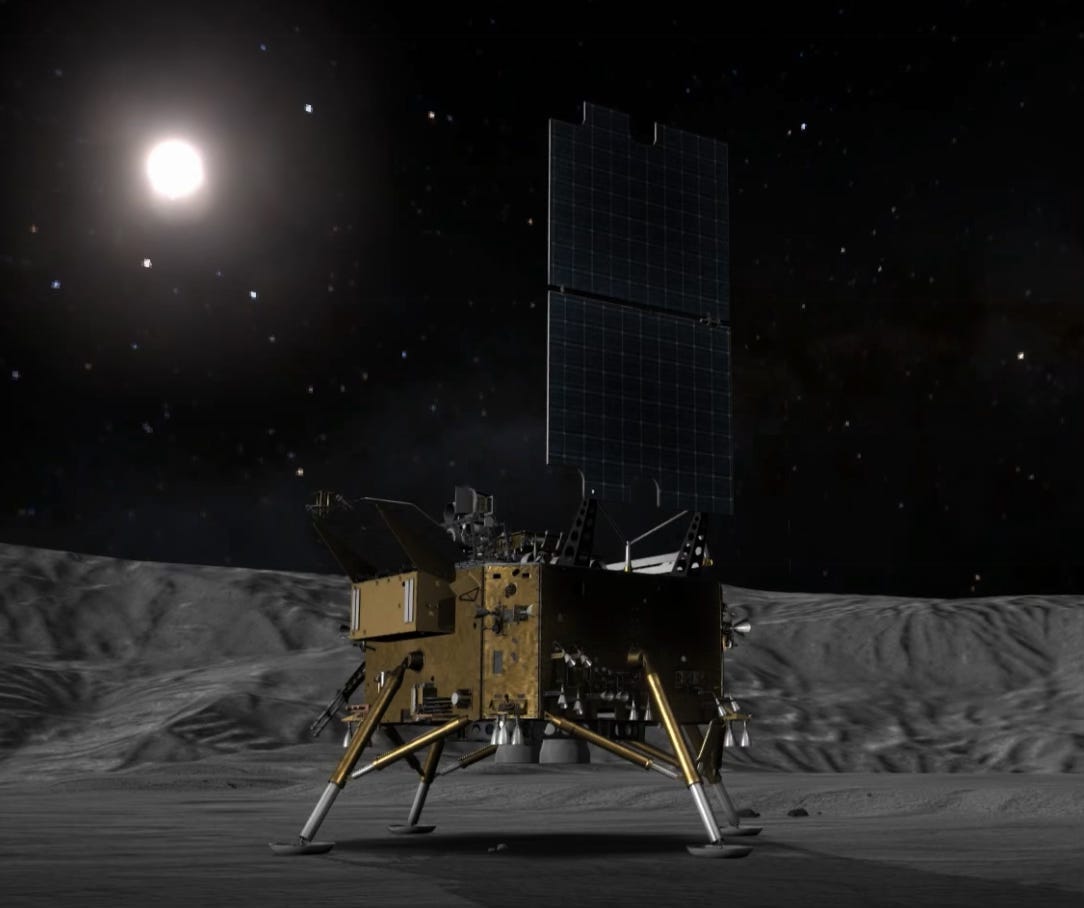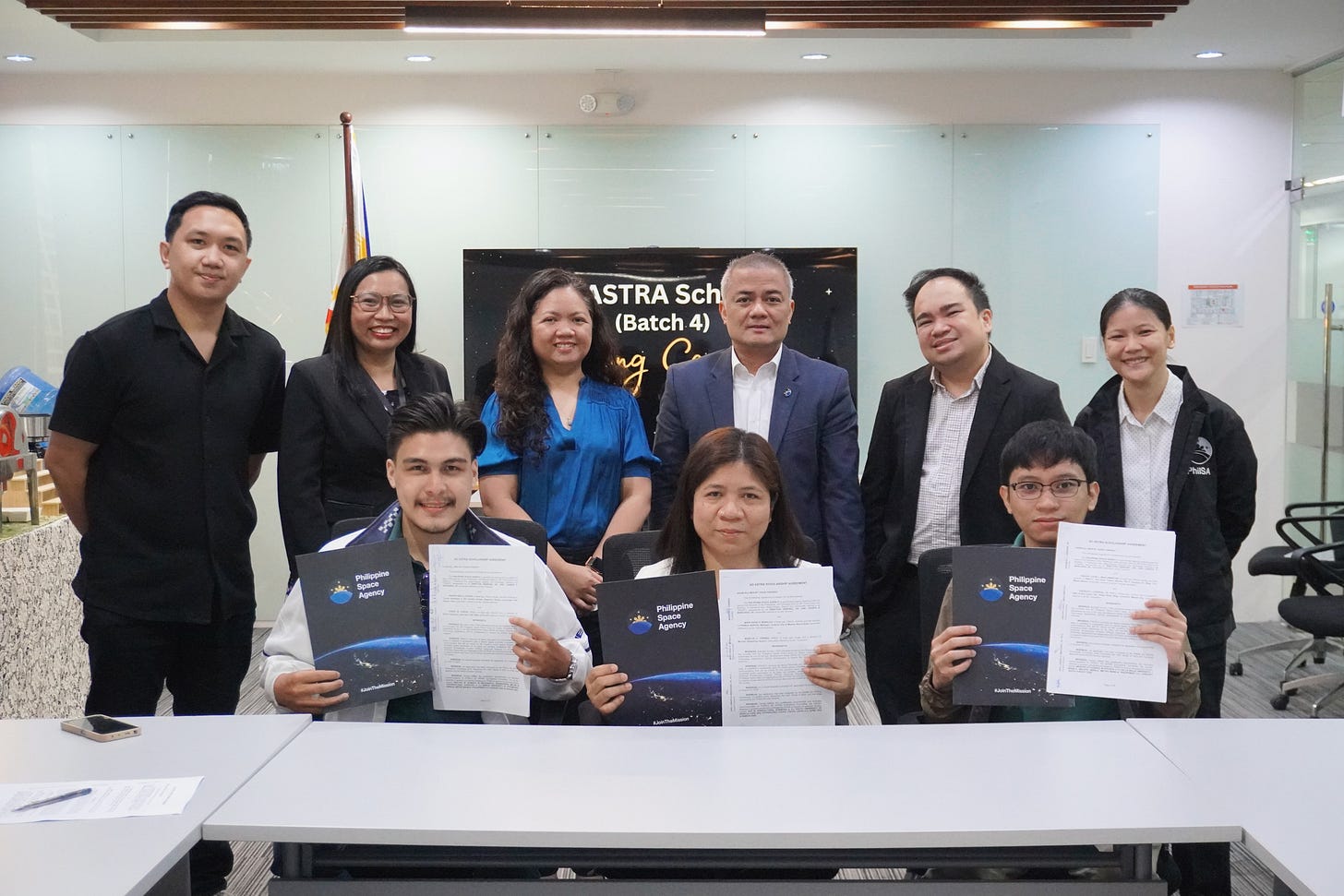Southeast Asia Space Roundup: 17 to 23 April 2025
A summary of all the space news in Southeast Asia over the past week, brought to you by AzurX
AzurX’s Global Monitor is proud to announce the launch of Latin America Space Monitor (LASM) on Thursday, 24 April 2025.
Subscribe via this link.
The following are the major space developments in the Southeast Asian region tracked by Southeast Asia Space Monitor over the past week:
Malaysia Space Developments
Malaysia and China Reaffirm Commitment to Space Cooperation and Development
During President Xi Jinping’s state visit to Malaysia, both countries reaffirmed their commitment to deepening bilateral cooperation in science, technology, and innovation, with a strong emphasis on advancing space capabilities and the peaceful use of outer space. Under the existing China-Malaysia Agreement on Space Cooperation, the two countries pledged to accelerate joint research and development platforms, enhance collaboration in science parks, and foster development of the new space economy. This includes expanding space applications for national security and economic growth, as well as promoting mutual benefits through technology transfer and innovation. The partnership will leverage intergovernmental mechanisms like the Joint Committee on Science, Technology and Innovation Cooperation and the China-Malaysia Joint Research Project. These efforts form part of a broader strategy to integrate emerging technologies, including in satellite development, while supporting Malaysia’s national development goals and regional leadership in the space sector.
Malaysia and China Sign MoU to Cooperate on BeiDou Global Navigation Satellite System
During Chinese President Xi Jinping's state visit to Malaysia, a total of 31 Memoranda of Understanding (MoUs) and agreements were exchanged, underscoring deepening bilateral ties across sectors, including key advancements in space cooperation. Notably, Malaysia and China signed an MoU to strengthen collaboration on the application of China's BeiDou Global Navigation Satellite System, with Science, Technology and Innovation Minister Chang Lih Kang representing Malaysia. This move signifies Malaysia’s increasing integration into China’s satellite and positioning technologies, reinforcing regional navigation capabilities. The visit also saw agreements to establish joint laboratories in emerging technologies, including AI and digital infrastructure, further aligning with Malaysia's broader ambitions to enhance its scientific and space ecosystem. These developments reflect Malaysia’s strategic positioning within China’s broader space-related and geotechnology diplomacy under the Belt and Road framework.
Malaysia’s Altel Group Forms JV With China’s Geespace for LEO SATCOM Services
Malaysia has significantly advanced its space technology ambitions through the launch of Altel Digital Integrated Sdn Bhd, a joint venture between Altel Group and China’s Zhejiang Geespace Technology Co Ltd, aimed at deploying low-Earth orbit (LEO) satellite services across Malaysia and ASEAN. Leveraging Geespace’s GEESATCOM network and integrating it with Altel’s LTE infrastructure, Altel Digital will provide key services such as satellite-based IoT, high-precision positioning, satellite broadband and backhaul, and direct-to-cell connectivity—targeting strategic sectors like maritime, smart mobility, precision agriculture, and advanced manufacturing. Aligned with the National Space Policy 2030 and other national digital frameworks, the initiative underscores Malaysia’s intent to enhance digital sovereignty by ensuring all data is processed locally under national security standards. The government also emphasized the venture’s role in talent development through a dedicated center of excellence, reinforcing Malaysia’s commitment to building a robust space-tech ecosystem and supporting its Fourth Industrial Revolution agenda.
Sarawak Unveils Aerospace Roadmap Under PCDS 2030 to Propel Economic Growth
Sarawak, Malaysia, has launched a comprehensive aerospace roadmap as part of its Post COVID-19 Development Strategy (PCDS) 2030, aiming to position the state as a regional leader in the aerospace sector. The plan includes the establishment of the CENTEXS Aerospace Academy in Lundu, which will train a skilled workforce to support the industry's growth. Sarawak's vision encompasses developing its own satellite constellation and integrating space technology into various sectors, including resource management and infrastructure planning. Strategic partnerships with international entities are also being pursued to bolster the state's capabilities and global competitiveness in aerospace.
Vietnam Space News
Report: Still All to Play For in Vietnam’s Satellite Reconnaissance Bid
The mapping department of the People's Army of Vietnam has allocated over €10 million ($11.37 million) for a new geospatial imagery tender, focusing primarily on acquiring high-resolution satellite imagery (0.3m to 0.5m accuracy) to monitor China's land reclamation activities in the disputed South China Sea territories, particularly the Spratly and Paracels Islands, according to Intelligence Online. The budget also includes funds for synthetic aperture radar (SAR) and infrared satellite data, as well as advanced analytical software leveraging AI for terrain change detection and military target identification. While Vietnam’s first SAR satellite, LOTUSat-1, is set to launch later this year, the military is also considering procuring additional high-resolution optical and SAR satellites, with Israel Aerospace Industries reportedly in the running for a significant contract, though delivery would not occur before 2028. International players such as Airbus, Thales, and Lockheed Martin are competing for future deals, and interest from New Space startups in supplying AI-based geospatial analytics is rising. However, any major contract announcements are expected to be delayed until after Vietnam’s 2026 Communist Party congress due to the political sensitivity of defense procurements.
Vietnam Celebrates Amanda Nguyễn as First Woman of Vietnamese Origin in Space
Amanda Nguyen, the Vietnamese-American activist and bioastronautics researcher, made history on 14 April 2025, by becoming the first woman of Vietnamese descent to travel into space aboard Blue Origin's New Shepard mission NS-31. The all-female crew reached an altitude of 100 km before safely returning to Earth. Vietnam’s President Luong Cuong sent a congratulatory letter, expressing pride in Nguyen's achievement and highlighting her collaboration with the Vietnam National Space Center. Nguyen's journey not only marks a significant milestone for representation but also strengthens the cooperative relationship between Vietnam and the United States in space exploration.
Singapore Space Developments
Singapore Space Exploration Company Qosmosys Opens R&D Center in Saudi Arabia
Singapore-based Qosmosys has announced the opening of its new office in Riyadh, marking a major strategic shift to establish the Saudi capital as its global headquarters within the next two years. This move reflects the company's ambition to align its R&D and operational capabilities with the Kingdom’s growing role as a space and technology hub. The Riyadh office will oversee key projects including TRIOPS, a lunar positioning and navigation system, and will act as the central node for global coordination and innovation. Qosmosys aims to leverage Saudi Arabia’s economic vision and its positioning in the emerging Moon economy to attract international partnerships and funding. The decision underscores Qosmosys' broader strategy to integrate advanced space technologies with sustainable business models, while reinforcing Saudi Arabia’s status as a key player in future lunar exploration and Earth-oriented tech applications.
Singapore’s Kacific Wins Its Second SIG Best Cooperation Award
Singapore’s Kacific Broadband Satellites Group has won its second Satcoms Innovation Group (SIG) Best Cooperation Award, recognizing its role in expanding affordable high-speed internet across underserved Asia-Pacific regions. Using its Kacific1 satellite and solutions like Gigstarter and CommsBox, Kacific has connected over 500,000 users, 3,379 schools, and 378 healthcare facilities. Through partnerships with governments, NGOs, and organizations like Microsoft Airband and the UNDP, Kacific continues to bridge the digital divide and support socio-economic development.
Indonesia Space News
Indonesia and Denmark Discuss Satellite-Based Maritime Surveillance
Indonesia and Denmark are exploring bilateral cooperation in satellite-based maritime monitoring technologies, following a high-level meeting between Indonesia’s Minister of Maritime Affairs and Fisheries Sakti Wahyu Trenggono and Danish Foreign Minister Lars Løkke Rasmussen in Jakarta. The discussions focused on the deployment of satellite constellations and marine drones to enhance marine health surveillance and combat illegal fishing in Indonesian waters. Minister Trenggono highlighted the importance of satellite-enabled monitoring systems for maintaining sustainable ocean ecosystems, while Rasmussen emphasized the mutual interest between the two maritime countries and praised Indonesia's technological progress. Marking 75 years of diplomatic relations, the dialogue reflects growing momentum for space-based maritime cooperation, potentially positioning Indonesia as a regional leader in satellite-driven ocean governance.
Indonesia’s Telkomsat Launches Free Satellite Internet Scheme for Remote Schools
Telkomsat has launched a satellite-based free internet service to support digital equity in Indonesia’s underdeveloped, frontier, and outermost (3T) regions, beginning with SMA Negeri 8 Halmahera Barat in North Maluku. Leveraging the SBS platform and Mangosphere product, this initiative—part of Telkomsat’s corporate social responsibility—aims to address persistent connectivity gaps that hinder educational development in remote areas. The program enables improved access to online learning for teachers and students, while also fostering local human capital. Welcomed by school and provincial leaders, the initiative underscores Telkomsat’s strategic role in advancing digital infrastructure and educational transformation through satellite connectivity.
Thailand Space Developments
Thailand’s Space Ambitions Increasingly Tied to Cooperation With China
Thailand’s growing space ambitions are increasingly anchored in strategic cooperation with China, as exemplified by the activities at Space Krenovation Park in Chonburi Province, home to GISTDA's Space Technology Center and National Satellite Manufacturing Center. China has played a pivotal role in supporting Thailand’s space capabilities, providing key equipment such as vibration testing systems for the THEOS-2 satellite and enabling knowledge transfer through satellite development partnerships. The bilateral relationship deepened in 2023 with the signing of MoUs on peaceful space exploration and lunar research, culminating in Thailand contributing a space weather monitoring payload for China’s upcoming Chang’e-7 lunar mission. The cooperation extends to scientific research and agriculture, including Thai rice seed experiments aboard China’s Shijian-19 satellite, aimed at enhancing food resilience through space breeding. Education and talent development also feature prominently, with GISTDA and Wuhan University jointly offering a GIS master’s program, and Thailand participating in APSCO-led capacity building. As China’s role in the global space economy expands, Thailand’s integration into its ecosystem is accelerating, positioning the Kingdom as an emerging regional space player with ambitions in both science and the space economy.
Thailand to Participate in China’s Chang’e-8 Lunar Mission
Thailand has been prominently featured in China’s upcoming 2025 Space Day celebrations, serving as this year’s official guest of honor and participating in international lunar science initiatives. Among the 15 international projects selected for payload cooperation on China’s Chang’e-8 lunar probe are contributions from Thailand, alongside those from ESA and Pakistan, focusing on advanced lunar robotics and rovers. The event, set for 24 April 2025 in Shanghai, underscores China’s growing role in global space collaboration and includes the announcement of the international allocation of Chang’e-5 lunar samples. Thailand’s involvement signifies deeper space cooperation with China, reinforcing its aspirations to expand scientific engagement and technological collaboration in space research. This milestone coincides with broader achievements in China’s space program, including 68 orbital launches in 2024 and landmark missions like Chang’e-6’s far-side lunar sample return. With its role in Chang’e-8 and recognition at the Space Day event, Thailand is positioning itself more visibly within the regional and global space ecosystem.
Philippines Space News
Philippine Space Agency Partners With Brightside International for HTS SATCOM
The Philippine Space Agency (PhilSA) has signed a strategic Memorandum of Understanding with U.S.-based Brightside International Corp. to deploy a high-throughput satellite (HTS) internet system across the Philippines by 2028, aiming to deliver up to 1 Tbps of national capacity and significantly bridge the digital divide. This ambitious partnership will combine Brightside’s satellite expertise and proprietary last-mile technologies with thousands of locally manufactured base stations to provide gigabit-speed connectivity, particularly targeting underserved rural communities. In addition to digital inclusion, the project will bolster national sovereignty through the development of a Filipino-built, AI-enhanced cybersecurity infrastructure, and local software solutions—explicitly designed to avoid reliance on foreign vendors such as Huawei or ZTE. The initiative is projected to create over 1,000 high-skilled jobs in satellite production and aims to position the Philippines as a regional innovation hub. Aligned with the Marcos administration’s “Konektadong Pinoy” bill and the National Fiber Backbone initiative, the partnership promises to drive measurable socio-economic impacts including improved crop yields, enhanced SME market access, and accelerated emergency response capabilities.
PhilSA Welcomes Fourth Batch of AD ASTRA Scholars to Strengthen National Space Workforce
The Philippine Space Agency (PhilSA) has officially welcomed the fourth cohort of scholars under its Advanced Degrees for Accelerating Strategic Space R&D and Applications (AD ASTRA) program. Launched in 2021, this initiative supports Filipino students pursuing postgraduate studies in space science and technology, both domestically and internationally. To date, 19 scholars have benefited from the program, with four having completed their degrees and now contributing to the nation's space sector. PhilSA aims to award scholarships to ten individuals annually over the next five years, aligning with the Philippine Development Plan 2023–2028 and the Ambisyon Natin 2040 vision. This effort underscores the agency's commitment to cultivating a skilled workforce to advance the country's space capabilities.
Other Regional Space Developments
Amidst U.S.-China Trade War, ASEAN Countries May See Space Benefits
The new Deloitte report, Space to Thrive: Southeast Asia’s Space Industry on the Rise, argues that Donald Trump’s renewed trade war with China and increased U.S. tariffs may unintentionally benefit ASEAN countries by positioning them as neutral hubs in the global space economy—especially for Earth observation and satellite services, according to Andrew Curran writing in Australian publication Space & Defense. With the geopolitical rivalry amplifying supply chain vulnerabilities, companies may increasingly turn to Southeast Asia for friendshoring opportunities, leveraging the region’s balanced diplomatic ties with both China and the U.S. The report projects Earth observation data alone could add $45 billion to ASEAN economies by 2030, and $100 billion in total GDP contributions, driven by rising capabilities in countries like Indonesia (which is building an equatorial spaceport in Papua), Malaysia (developing a space launch industrial center), and Vietnam (nearing the launch of LOTUSat-1 and completing its national space center). While the report highlights the commercial potential, it may understate the geopolitical complexities, as illustrated by Xi Jinping’s recent state visit to Vietnam and Trump’s assertion that such engagements aim to undermine U.S. interests—revealing that ASEAN’s neutrality is both an opportunity and a diplomatic balancing act in a fragmented space landscape.
Hybrid Mix of Satellites and Subsea Cables Vital to Southeast Asia’s Connectivity Push
As the Asia-Pacific region accelerates its digital transformation, the competition between satellite systems and subsea cables is becoming central to its connectivity strategy. While over 95% of international data still flows through undersea cables—such as those linking Southeast Asia to global data hubs—low-Earth orbit (LEO) satellites are rapidly gaining traction, particularly in geographically fragmented countries like Indonesia and the Philippines. LEO constellations from players like Starlink and OneWeb offer high-speed, low-latency coverage in areas inaccessible to terrestrial infrastructure, helping close the region’s digital divide. Strategic hybrid infrastructure models are emerging, with countries like Thailand and Australia investing in both subsea expansions and satellite coverage to ensure resilience and digital sovereignty. China is aggressively advancing its Digital Silk Road ambitions, launching over 400 communications satellites and expanding global subsea cable projects, while ASEAN is working to diversify infrastructure suppliers. With satellite markets in Asia projected to grow at over 50% CAGR through 2030, and subsea investments exceeding $10 billion by 2026, regional connectivity is becoming a multi-layered ecosystem that blends terrestrial, submarine, and orbital assets to meet rising data demands and geopolitical imperatives.

UN SPIDER Activated International Charter to Provide Space Support to Myanmar’s Earthquake Relief
In the wake of Myanmar's devastating 7.7 magnitude earthquake on 28 March 2025, the United Nations Platform for Space-based Information for Disaster Management and Emergency Response (UN-SPIDER) activated the International Charter on Space and Major Disasters to provide satellite imagery and geospatial data for emergency response efforts. This activation facilitated rapid damage assessments and supported humanitarian organizations in coordinating relief operations across the affected regions. The utilization of space-based technologies proved crucial in mapping the extent of the disaster, identifying inaccessible areas, and optimizing the allocation of resources, thereby enhancing the overall efficiency of the disaster response. This event underscores the vital role of satellite data in managing natural disasters and highlights the importance of international collaboration in leveraging space technology for humanitarian aid.
Subscribe to Southeast Asia Space Monitor:
GPS Spoofing Attacks Spike in Southeast Asia and the Middle East
A significant increase in GPS spoofing attacks has been observed across the Middle East and Southeast Asia, disrupting air and maritime navigation systems. These incidents, which surged notably in 2024, have continued into 2025, affecting regions including Myanmar and the India-Pakistan border. The scale and sophistication of these attacks suggest involvement by state or military actors, posing serious risks to transportation safety and highlighting the need for enhanced cybersecurity measures in navigation systems.
Remember to subscribe to the Latin America Space Monitor (LASM) which launches on Thursday, 24 April 2025.
Subscribe via this link.
Be sure to catch up with space activities in the region in the next edition of Southeast Asia Space Monitor’s space roundup!
Follow Southeast Asia Space Monitor on X at: @SEAsia_Space and on BlueSky at: @seasiaspacemonitor.bsky.social



